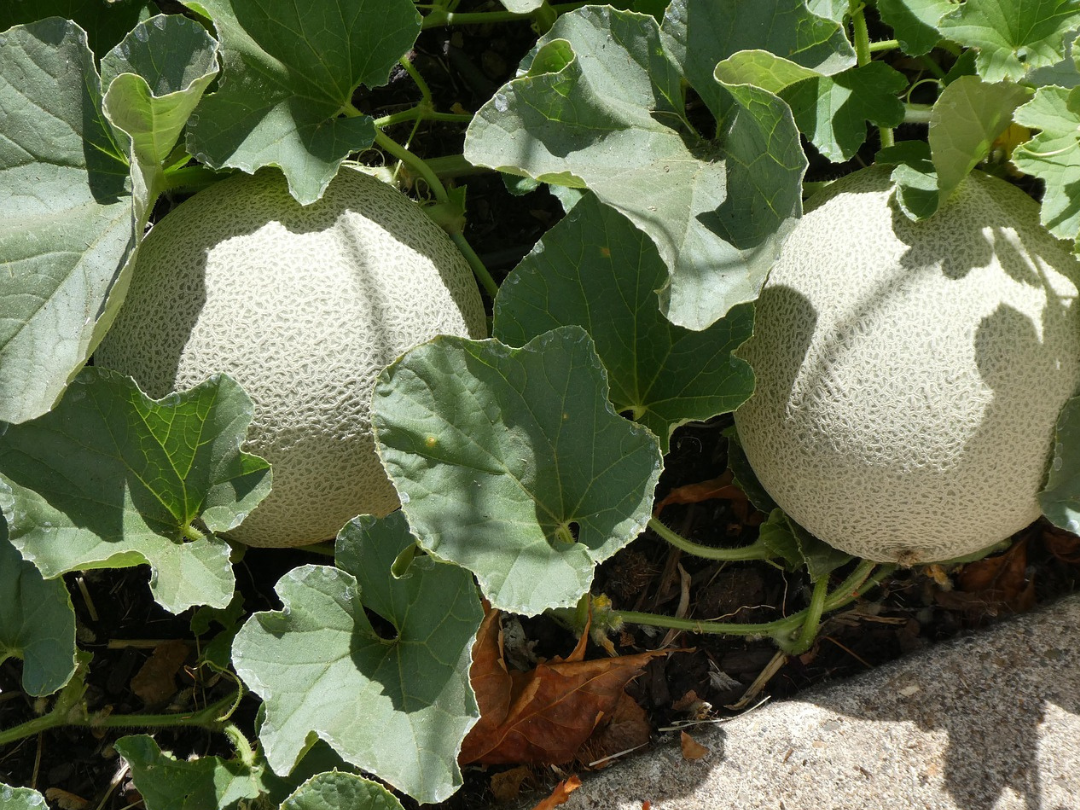Growing exceptional melons

Top tips for growing Melons
- build a trellis for cantaloupe and other melons of a similar size
- prepare a rich non-nitrogenous soil for all melons
- keep the soil moist continually
- prevent powdery mildew on leaves by watering in the morning directly onto the soil and avoid wetting leaves
- Melons include ones best grown on a trellis: such as cantaloupe (aka rockmelon), the yellow canary melon, honey dew melon and other small round melons, as well as watermelons grown on mounds of compost, aged manure and soil. The difference is primarily weight. Watermelons are too big and heavy to grow on a trellis. Home-grown melons have a better taste and texture than store-bought melons because they ripen on the vine. In fact, melons do not ripen once picked and store-bought ones are often soft rather than crisp.
Melons belong to the cucurbit family which includes gourds, cucumber, zucchini and pumpkin.
Position
Plant seeds in September in pots, or from October to December outside. Choose a site with full sun, shelter from wind and good drainage.
Soil Preparation
All melons thrive on a rich, but non-nitrogenous soil. Begin preparation of your bed or mound a good month before planting and dig in plenty of aged manure such as cow or sheep manure, or pellets of these. Early preparation and watering the soil well helps the manure break down and become available early to the seedlings.
For watermelons, provide mounds of soil, compost and aged manure – a large barrowful for each mound. Add in some potash.
pH
6-6.5
Planting and spacing
Either raise seeds in pots and transplant or plant directly into the bed or mound. Melons that grow on a trellis should be spaced 60cm apart. Build the trellis before planting. A trellis keeps the fruit off the ground and helps prevent attack from crawling insects. Watermelons are planted on a mound that has a crater in the centre. Four seeds or seedlings of watermelon can be planted on this mound around the edge of the central crater which will act as a soaker and keep the mound moist. Cover the mound with wire netting or protect single plants with upside-down hanging baskets, until the plants are well established. This prevents birds scratching the seeds or seedlings out, or small rodents eating the tender shoots.
Watering
Water at planting, and every second day until seedlings are well established. Then water deeply three times weekly in hot weather. Water in the morning and onto the soil, not the leaves, to avoid powdery mildew developing. Keep soil moist at all times and mulch thickly with pea straw to keep the roots cool.
Fertilising
Add more potash at flowering time. Add a monthly side dressing of compost or well-rotted manure as melons are greedy plants, or water with diluted worm wee.
.When to harvest
Harvest cantaloupes when the skin beneath the webbing turns from green to yellow; canary melons when they are very yellow; honey dew melons when the skin turns from green to creamy yellow. In general, 2 other tests are useful: the smell test – sniff the melon and if it smells sweet, it is ready – and testing the blossom end (the indentation underneath) for springiness. Push gently with one finger and if the skin springs back it is ready. Ripe melons will also show cracking around the stem where it attaches to the melon.
For watermelons the knock test works well. Slap or knock the skin and if it sounds hollow that indicates ripeness. Turn watermelon over and if the skin underneath has turned from white to yellow, that also indicates ripeness.
Seed saving
Scoop out the seeds from melons and either dry them on kitchen paper and store them or plant them fresh.
Storage
Whole melons should be stored on a bench top at room temperature. Cut melon should be stored in the refrigerator. When storing watermelon in the refrigerator, leave the seeds in the slices to help prevent deterioration.
Pests and diseases
- Snails and slugs can attack seedlings. Use your preferred method to deter these.
- In Victoria, various beetles, melon aphids, silverleaf whitefly and Queensland Fruit Fly can be a problem. Keeping the garden weed-free prevents aphids transmitting viruses that develop on various weeds; companion planting with garlic, chives and nasturtiums can be useful; netting must be used to defeat Queensland Fruit Fly.
- Powdery mildew is caused by water on the leaves especially late in the day. Spray with a solution of 9 parts water to 1 part milk at the earliest sign of powdery mildew.
Two Youtube videos from ‘The kiwifarmer’ on melons and watermelons are a very useful reference.
Written by Robin Gale-Baker
